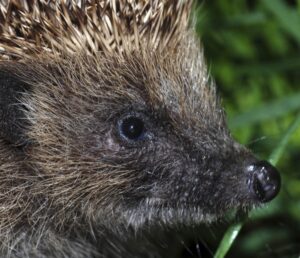He has been involved in hedgehog research ever since and will describe aspects of its natural history
The hedgehog has been voted Britain’s most popular animal and it is our most easily recognised species, familiar to everyone. Yet its ecology was poorly understood until Pat Morris carried out the first PhD study of hedgehogs in the 1960s. He has been involved in hedgehog research ever since and will describe aspects of its natural history, including the fate of animals rescued and released by animal hospitals. Hedgehogs have been with us for millions of years, longer than woolly mammoths and sabre-toothed tigers, yet they now face multiple threats as a result of human activity and they need our understanding and support.
How far do hedgehogs travel in a night, does it do any harm to feed them in the garden? What about bread & milk? Or mealworms? What happens to rescued hedgehogs after they are released from an animal hospital, how long do they live, what about their sex life (especially with all those spines!). Is it true the males have bigger reproductive organs than humans? Why are hedgehogs seen less often now and what can we do to help hedgehogs if they are in decline? All will be revealed by the author of ‘the Hedgehog’
Dr Pat Morris was Senior Lecturer in Zoology at Royal Holloway, University of London, and retired (early) in 2002 to spend more time with his taxidermy. He taught many students who now work in wildlife conservation, and also taught evening classes for adults for 20 years. He is well known for his studies on mammals, especially hedgehogs, dormice, water voles and red squirrels. He is a past Chairman of the Mammal Society and holder of its Silver Medal. He was a Council Member of the National Trust for 15 years and Chairman of its Nature Conservation Advisory Panel. He is President of the British Hedgehog Preservation Society, a former Vice President of the London Wildlife Trust. He served on a Government Enquiry into aspects of the badgers and TB problem and for 3 years was co-Director of the International Summer School on the Breeding and Conservation of Endangered species, based at Durrell Zoo in Jersey.
He has published over 70 scientific papers, mostly on mammals and written about 20 books on bats, dormice, ecology of lakes and general natural history, with total sales of around 250,000. His popular book on hedgehogs has remained in print since 1983, his New Naturalist monograph on the hedgehog was published in 2018. He was a consultant to major publishers and the BBC Natural History Unit, for whom he also contributed radio and TV programmes for 20 years. He has travelled to more than 30 countries, including five expeditions to Ethiopia and 19 visits to the USA covering 47 of the States.
In his spare time he has pursued a longstanding interest in the history of taxidermy and was appointed the first Honorary Life Member of the Guild of Taxidermists. He published papers and 8 books on this topic and serves as one of the Government’s taxidermy inspectors for assessing age and authenticity of antique taxidermy in connection with CITES controls. The Society for the History of Natural History awarded him its Founder’s Medal and he was made MBE by the Queen in the 2015 New Year’s Honours List and has a devoted (biologist) wife, married in 1978.
He speaks in a purely personal capacity and not on behalf of any of the organisations with which he is involved, past or present.
Watch a recording of This Lecture, & 100s of others, for free when you join our Patreon www.patreon.com/theviktorwyndmuseum

Become a Patron for Free Museum Entry, Delightful Zoom Discounts & Other Goodies
